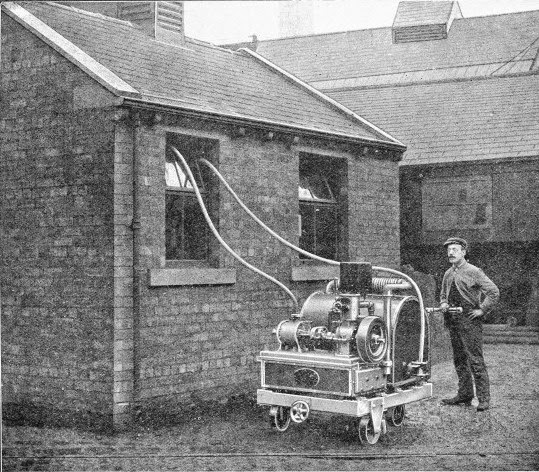 |
| A rare photo of the Clayton fumigating a house in 1914. |
The Clayton Disinfector was a
fumigation device used to combat plague and other diseases spread by rats and
insects in the early 20th century. The device emitted sulfur-polyoxide
gas, usually diluted to 10-12%. The Clayton worked by burning sulfur in the
apparatus and blowing the gas through the fumigation tubes. The gas passed through a device that cooled the
gas before entering the area being fumigated. The gas was left for about eight
to twelve hours before being removed. One pound of sulfur could be used to
fumigate 400 cubic feet.
The gas was effective against bubonic
plague spores, cholera, and typhoid. In small doses, the gas actually worked as
a preservative for meat and was not harmful to other food items, with the
exception of fruits and vegetables and any type of liquid.
The Clayton Disinfectors were used to
disinfect cargo ships to ensure that they did not transport diseases from port
to port. They were also used in hospitals and any other infested building. Additionally,
the Clayton was used in sewers and drains to kill off rat populations.
When used in ships, the apparatus
would be fastened to a small tugboat that could be brought close to the larger
ship and the fumigation tubes thrown onboard. For buildings, it was attached to
a cart that made for easy transportation of the device.
It could only be used in confined
places, as open areas would not be able to hold the gas for the needed time to
kill the infestation. Despite this, the Clayton Disinfector had many uses and
was one of the best extermination systems available at the time.
For more information on the Clayton
Disinfector see:
 |
| An illustration of the Clayton fumigating a cargo ship. |
 |
| Another illustration of the Clayton in action. |
Comments
Post a Comment